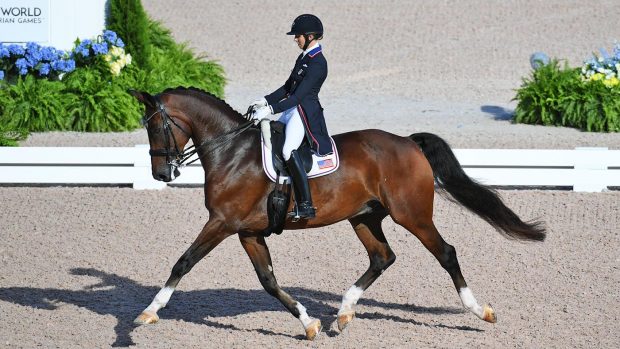Riding clubs and Pony Club branches in the Orkney Islands lent horses for a moving commemoration to remember the eight million horses lost during the First World War.
More than 500 people attended the10.30am service on 12 June on the green outside St Magnus cathedral in Kirkwall.
The eight horses were led around the cathedral green with 4,000 ceramic poppies, on tour from the Blood Swept Lands and Seas of Red installation created at Tower of London last year, as a backdrop.
“We were offered over 30 horses; everyone was very enthusiastic,” said Susan Learmonth, who organised the service with fellow Orkney Riding Club member Karen Greaves.
The horses’ owners were asked to dress in clothes that would have been worn before the war.
The horses were chosen by size, colour and build to accurately represent various jobs, from cavalry to pulling guns or carrying supplies to the troops.
“We researched what type of horses were used in the war,” said Mrs Learmonth.
A skewbald called Pii was chosen to represent the thousands of American horses who were shipped across the Atlantic Ocean to be used in battle.

Also involved were Mrs Greaves’ hunter Jack, as a cavalry horse (pictured, above), and Cloudy owned by Andrew Cole, another Orkney Riding Club member.
The Hools Shetland Pony Stud on Orkney lent Major for the service and local Pony Club member James Adamson his 16.2hh eventer, Benson.
All the horses lined up on the green before the service, which was taken by cathedral minister Fraser McNaughton.
Prayers and poems were read, including In Flanders Fields, A Soldier’s Kiss and a poem called Remembering the Horse written for the service by Mrs Learmonth.
Related articles:
- In memory of those who made the ‘ultimate sacrifice’
- Final War Horse play will help preserve real WW1 stables
- 7 reasons you need to see War Horse
Afterwards eight Pony Club members, as the “equine carers of the future”, passed on posies of wild poppies and oats to the owners.
Each horse was led up to the war memorial after the readings where the posies were laid, and a basket of white doves was released to represent peace and the thousands of pigeons used during the First World War to carry messages.
“There was not a dry eye in the house,” Mrs Learmonth said.



